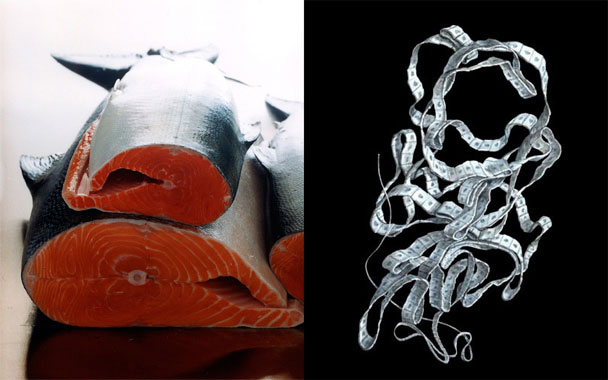Salmon tartare—eye-catching, fun, hip and tasty—has become a popular menu item in many top restaurants. Celebrity chefs prepare it on television. Mainstream magazines, newspapers, and cookbooks feature recipes. Raw salmon dishes—tartare, crudo, sushi, marinated and cured salmon—are growing in popularity. But unless that fish has been frozen first, it would be wise to pass.
That’s because a tiny tapeworm larva may lurk in the raw salmon flesh, just waiting for you to eat it so that it can take up residence in your digestive tract. Diphyllobothrium latum, carried by freshwater fish (including anadromous wild salmon, which spend their early lives in fresh water), is the largest human tapeworm. After the larva is ingested by a fish-eating mammal, it hooks onto the small intestine, where it grows to maturity, freeloading on its host for nutrients (it has a special affinity for Vitamin B12). Cooking fish or freezing it at minus-31 degrees Fahrenheit or colder for 15 hours will kill Diphyllobothrium larvae. Marinating will not. Freezing fish at slightly higher temperatures for longer periods will also kill the larvae but will likely diminish the quality of the fish.
Just this week, a Chicago man sued a well-known local restaurant for $100,000, claiming that he had acquired a nine-foot tapeworm from an undercooked salmon salad in 2006. (The restaurant’s parent company, LEYE, says the restaurant was cleared in the incident by a 2006 Chicago Health Department investigation.) It’s the first case of tapeworm infection to make the news in a while, and that lack of media coverage—combined with the growing popularity of sushi over the past few decades—may help explain the prevalence of raw fish dishes in recent years. (Ironically, Japanese chefs, at least those who have passed the exam that is required for opening a restaurant in Japan, never serve fresh salmon raw or lightly seared—“has to be frozen for sushi,” stresses sushi master Shiro Kashiba, of Shiro’s Sushi Restaurant in Seattle.)
Chefs who offer raw salmon today are no doubt unaware of the 1980s press—like these articles by Mimi Sheraton in The New York Times—about outbreaks of Diphyllobothrium latum infection (known as diphyllobothriasis) and the risks associated with eating raw or undercooked salmon. In the fall of 1980 there were 36 known cases of diphyllobothriasis on the East Coast attributed to raw salmon. In the same year, the CDC issued an advisory after four medical doctors in Los Angeles acquired tapeworms from salmon sushi. In 1984, 17 people in the aptly named village of King Salmon, Alaska acquired tapeworms from eating salmon ceviche prepared from a recipe supplied by a visitor from California.




 Pinterest
Pinterest


